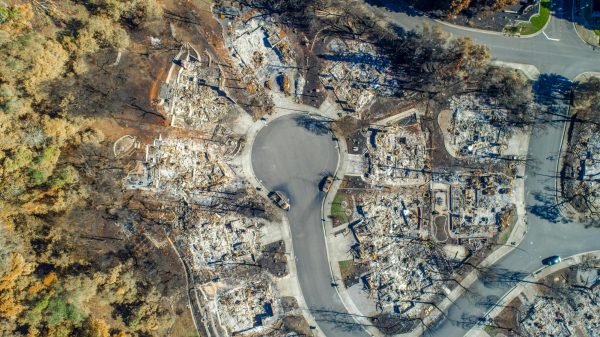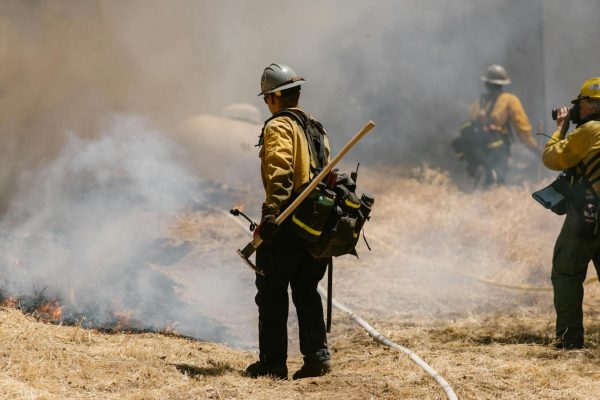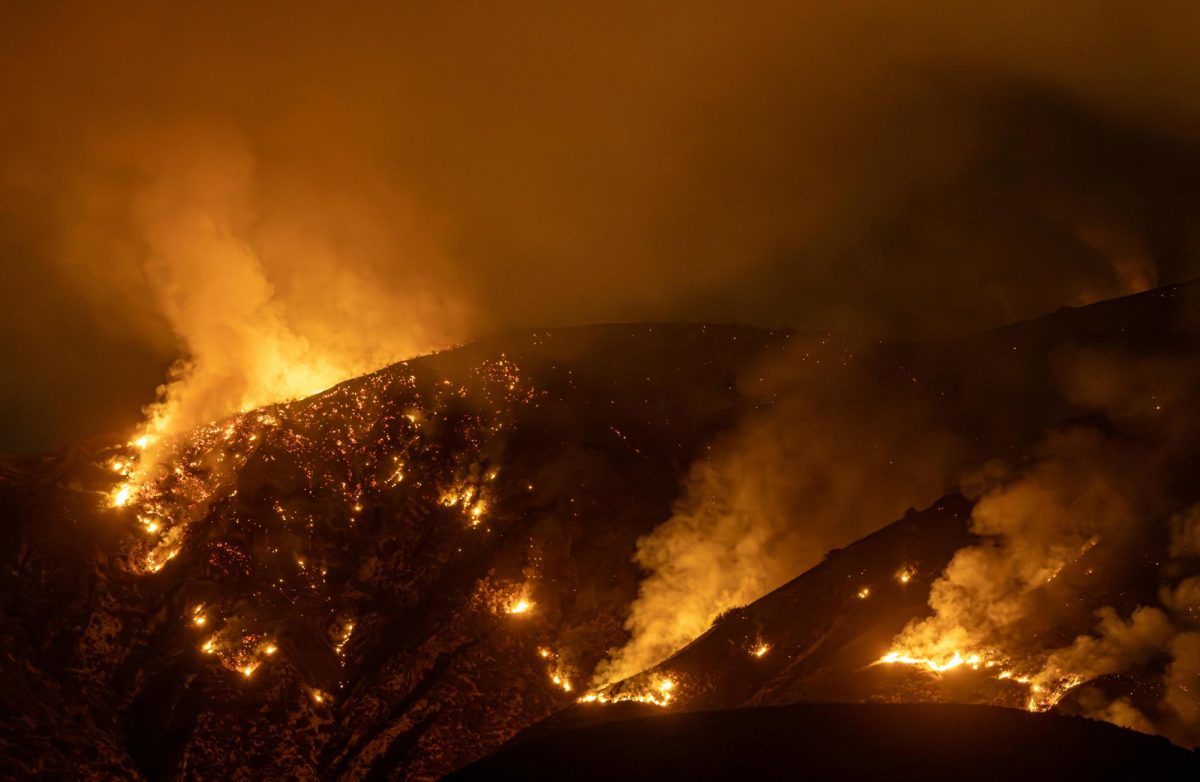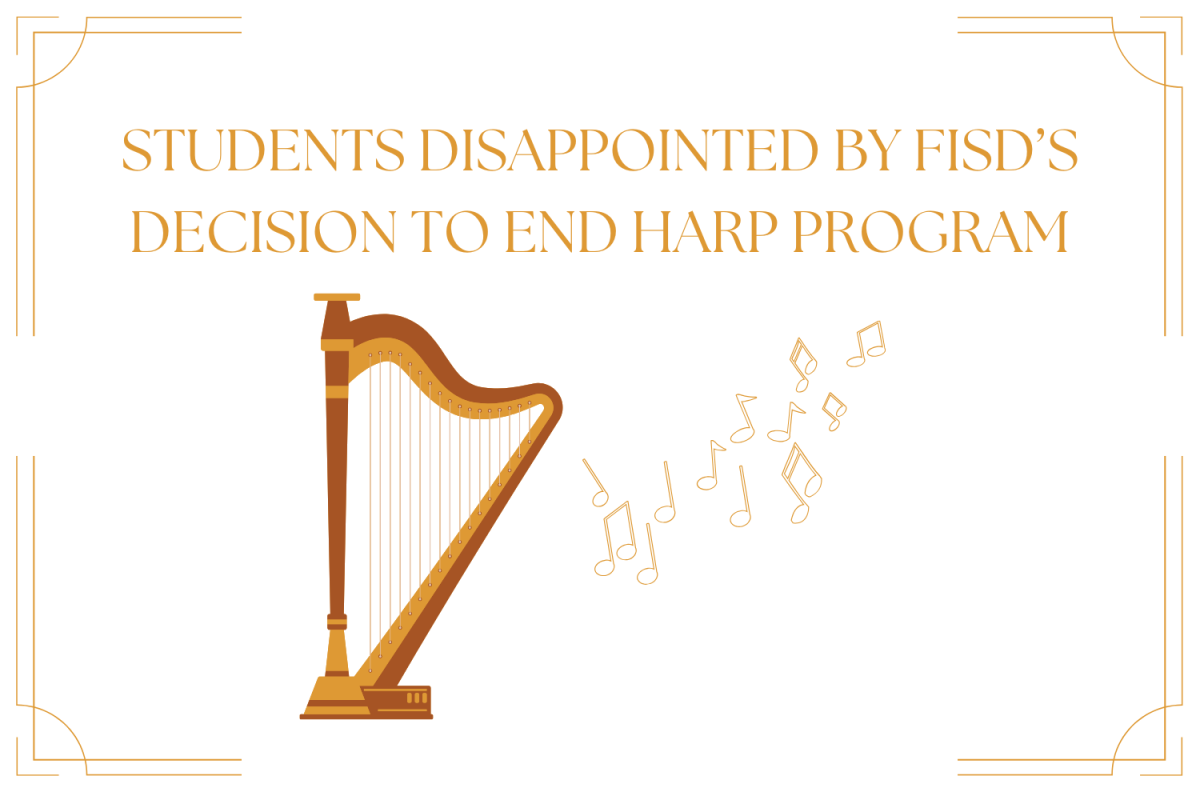After almost a month of high winds and hazardous smoke, the Palisades and Eaton fires in Los Angeles County were declared 100% contained Jan. 31. The fires devastated multiple communities in Los Angeles, including numerous landmarks and historical businesses. In total, 37,469 acres were consumed, 16,255 structures were destroyed and 29 lives were claimed. The impact the smoke will have on the health of those in the area is still undetermined, but could cause long term damage.
While wildfires in California can be traced as far back as 1889, the rate at which the most recent fires spread and the extent of the destruction was alarming. This intensity can be attributed to greenhouse gasses and the growing climate crisis.
“Studies show that climate change is a big reason why wildfires are getting worse,” said Tina Littlejohn, AP Environmental Science Teacher. “From 1971 to 2021, human-caused climate change led to a 172% increase in burned areas. From 2001 to 2021, it was even higher at 310%. While other things like forest management also matter, climate change
is now seen as the main reason wildfire risk is going up in the western United States.”
Climate change adds to the severity of wildfires for many reasons. As the temperature gets higher, the air gets hotter, which dehydrates plants and soil, making them more likely to catch fire. Combined with longer and drier fire seasons, this contributes to more “fire weather” days, where the conditions are just right for fires to start.
The entire ecosystem is thrown off course when there is a wildfire. For example, native plant species die and invasive species try to take their place. Animals also lose their habitat and sometimes can’t find their way back home. This is concerning for many researchers as wildfires become more common.
“Frequent wildfires are altering California’s diverse ecosystems,” Littlejohn said. “While some fire is natural and beneficial, too many fires can overwhelm an ecosystem’s ability to recover.”

As wildfires reach urban areas more often, communities in California face increased threats.
“I have a cousin in Huntington Beach whose school is on the verge of shutting down momentarily due to the air quality and the hazards that the fires are bringing,” Hannah Kohler, ‘26, said. “The childhood home of my aunt was destroyed in the fire, and it has devastated her.”
Growing up in California, Kohler has dealt with wildfires her entire life and seen what they do to the environment.
“I grew up in the San Diego area near Encinitas and it was common for my family to travel to nearby nature reserves that had been impacted by the fires,” Kohler said. “I remember standing on a hill that had been burning a week prior and seeing blackened hills covered with ash going on for miles. It was an experience that has shaped my view on environmental issues.”
Since the Palisades and Eaton fires hit communities where many celebrities and public figures live, it brought increased attention and publicity to the fires.
“I feel like the current wildfires are very aggressive, but I think awareness has spread mainly because of the location in Hollywood and Los Angeles,” Kohler said. “Areas around San Diego, where I grew up, had frequent, smaller wildfires that commonly went unnoticed.”
Because California’s population has grown, with the emergence of influencer culture and social media, it has made the wildfires more impactful to the public.
“The growth of cities into areas prone to wildfires has significantly increased both the risk and impact of these fires,” Littlejohn said. “This expansion puts more people and property in harm’s way. As more people move into fire-prone areas, the potential for loss of life and property increases. Higher population density in these regions means more structures at risk and more people who may need to evacuate during a fire.”
Although those living in California are no strangers to wildfires, an increased wildfire presence in urban areas could cause people to relocate to other states.
“I believe that communities will begin to disperse and migrate to other areas of the United States for the purpose of safer conditions,” Kohler said. “California already has many citizens leaving at rapid rates, and I believe that this will increase those numbers.”
While the flames are often the most notorious part of a wildfire, the smoke from the fire is just as deadly and can have fatal health effects. Often, the smoke’s impact on air quality is felt long after the fires are contained.

“Wildfire smoke contains toxic chemicals and fine particulate matter (PM2.5) that can cause both immediate and long-term health problems,” Littlejohn said. “Immediate health risks are respiratory irritation, burning eyes, reduced lung function and an increased risk of lung infection. According to the Environmental Protection Agency (EPA), prolonged exposure to wildfire smoke can potentially cause cardiovascular complications, increased stroke risk, a higher likelihood of developing lung cancer and chronic respiratory diseases.”
Wildfires release large amounts of greenhouse gases (GHG), and these emissions further contribute to climate change.
“Urgent action is needed both locally and globally to mitigate the effects of climate change,” Littlejohn said. “The latest data shows that forest fires are becoming larger and more frequent, emitting more carbon dioxide and exacerbating the climate crisis. The relationship between climate change and wildfires forms a dangerous feedback loop that intensifies both phenomena.”
Recently, the United States pulled out of the Paris Climate Agreement, which suggests a potential shift in approach regarding environmental policies.
The Paris agreement was adopted by 196 Parties at the UN Climate Change Conference (COP21) in Paris, France, on Dec. 12, 2015. It is an international treaty on climate change with the overall goal to hold “the increase in the global average temperature to well below 2°C above pre-industrial levels” and pursue efforts “to limit the temperature increase to 1.5°C above pre-industrial levels.”
Although the United States left the Paris Agreement, efforts are still being made within the country to find alternative solutions to burning fossil fuels. The most notable has been nuclear power.
“Commonwealth Fusion Systems (CFS) aims to build the world’s first grid-scale commercial fusion power plant in Chesterfield County, Va., with operations expected to begin in the early 2030s,” Littlejohn said. “This plant will be the first to harness nuclear fusion for commercial electricity production, a goal scientists have pursued for nearly a century. There’s no risk of chain reactions or meltdowns—and it’s expected to produce only low-level radioactive waste.”
The full impact of the Palisades and Eaton fires are just beginning to be felt, and in order to help prevent more fires in the future, climate change must be understood.
“Most of the students I know believe in climate change and the effect it’s had on our environment which has led to the firestorms,” Kohler said. “I understand there is a majority who believe that climate change isn’t real, but they are attempting to live in a past that doesn’t exist. Climate change will not hold back for anybody, and if our generation does not accept the reality of the growing concerns, there will be dire consequences and repercussions for the future.”
To help those impacted by the Palisades and Eaton wildfires visit cafirefoundation.org or calfund.org.





![Audra Shioya '25 receives a big check as a scholarship recipient. [PC: Audra Shioya]](https://raccoonrambler.com/wp-content/uploads/2025/05/IMG_4100-900x1200.jpeg)






